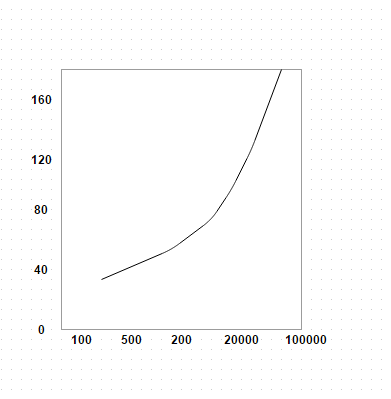This set of Heat Transfer aptitude tests focuses on “Dimensional Analysis – Advantages And Limitations”.
1. Ratio of actual velocity to sonic velocity is known as
a) Mach number
b) Peclet number
c) Reynolds number
d) Grashof number
View Answer
Explanation: It is the ratio of the speed of a body to the speed of sound in the surrounding medium.
2. The value of Prandtl number for air is about
a) 0.1
b) 0.4
c) 0.7
d) 1.1
View Answer
Explanation: It is about 0.7. It is indicative of the relative ability of the fluid to diffuse momentum and internal energy by molecular mechanisms.
3. Let us say Mach number (greater than one), the flow is
a) Sonic
b) Subsonic
c) Supersonic
d) No flow
View Answer
Explanation: Compressibility effects are important for supersonic aircraft, and shock waves are generated by the surface of the object. It is supersonic.
4. Free convection heat flow does not depend on
a) Density
b) Coefficient of viscosity
c) Gravitational force
d) Velocity
View Answer
Explanation: It does not depend on coefficient of viscosity.
5. Which dimensionless number has a significant role in forced convection?
a) Prandtl number
b) Peclet number
c) Mach number
d) Reynolds number
View Answer
Explanation: It is indicative of the relative importance of inertial and viscous effects in a fluid motion. Reynolds number is important in forced convection.
6. The non-dimensional parameter known as Stanton number is used in
a) Forced convection heat transfer
b) Condensation heat transfer
c) Natural convection heat transfer
d) Unsteady state heat transfer
View Answer
Explanation: It is the ratio of heat transfer coefficient to the flow of heat per unit temperature rise due to velocity of the fluid. It is used only in forced convection heat transfer.
7. The Prandtl number will be lowest for
a) Water
b) Liquid metal
c) Lube oil
d) Aqueous solution
View Answer
Explanation: It is minimum in case of liquid metal.
8. The dimensionless parameter l 3 p 2 β g d t/µ 2 is referred to as
a) Stanton number
b) Schmidt number
c) Grashof number
d) Peclet number
View Answer
Explanation: It indicates the relative strength of the buoyant to viscous forces. It is the Schmidt number.
9. Figure depicts the variation of which two numbers?

a) Nusselt number and Reynolds number
b) Stanton number and Reynolds number
c) Peclet number and Grashof number
d) Nusselt number and Stanton number
View Answer
Explanation: It depicts variation of Nusselt number and Reynolds number for flow of air over a pipe of 25 mm outside diameter. This correlation curve permits the evaluation of Nusselt number for air flow over any size of pipe as long as Reynolds number of that arrangement lies within the range.
10. Heat is loss from a 100 mm diameter steam pipe placed horizontally in ambient air at 30 degree Celsius. If the Nusselt number is 25 W/m2 K and thermal conductivity of the air is 0.03 W/m K, then heat transfer coefficient will be
a) 7.5 W/m2 K
b) 16.5 W/m2 K
c) 25 W/m2 K
d) 30 W/m2 K
View Answer
Explanation: N = h d/k. So, h = N k/d = 7.5 W/m2 K.
Sanfoundry Global Education & Learning Series – Heat Transfer.
To practice all areas of Heat Transfer for aptitude tests, here is complete set of 1000+ Multiple Choice Questions and Answers.>
If you find a mistake in question / option / answer, kindly take a screenshot and email to [email protected]
- Apply for Chemical Engineering Internship
- Check Chemical Engineering Books
- Practice Chemical Engineering MCQs
- Apply for Mechanical Engineering Internship
- Check Heat Transfer Books
